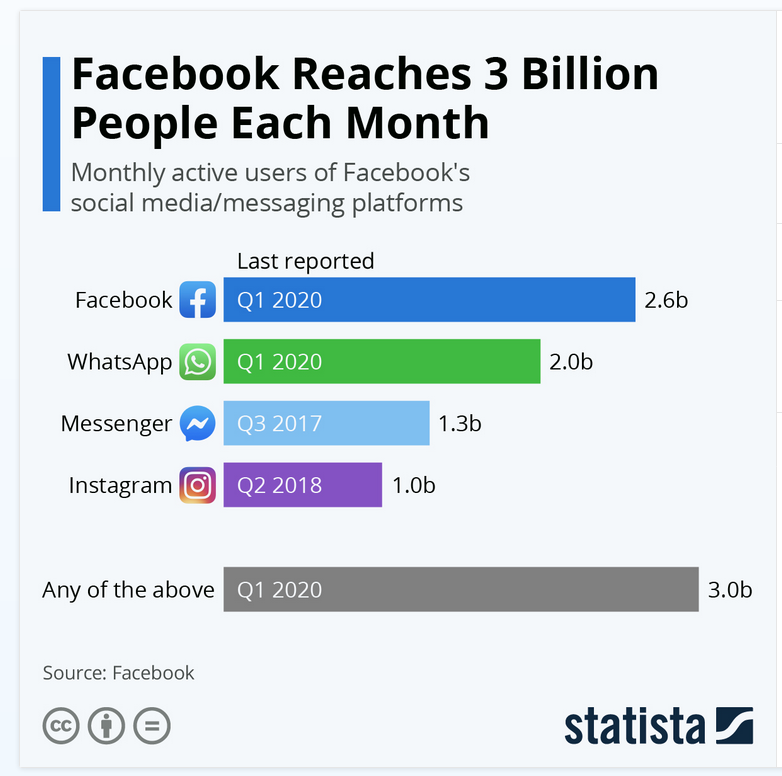Facebook reported its first quarter earnings on Wednesday, largely shrugging off concerns over its ad-centric business model amid the COVID-19 crisis. In fact, advertising revenue was up 17 percent year-over-year, partly because the effects of the pandemic only became apparent towards the end of the quarter. “We experienced a significant reduction in the demand for advertising, as well as a related decline in the pricing of our ads, over the last three weeks of the first quarter of 2020,” the official press release reads, adding that “we have seen signs of stability reflected in the first three weeks of April,” with ad sales roughly flat compared to the previous year.
In terms of user growth and engagement, Facebook also had positive news, reporting “increased engagement as people around the world sheltered in place and used our products to connect with the people and organizations they care about.” Across its family of apps, the company now has three billion “monthly active people”, which it defines as “as a registered and logged-in user of Facebook, Instagram, Messenger, and/or WhatsApp who visited at least one of these Family products through a mobile device application or using a web or mobile browser in the last 30 days as of the date of measurement.” While Facebook started reporting on this new metric in 2019, it hasn’t publicly shared new user data for Messenger or Instagram since 2017 and 2018, respectively, which is a shame because the latter in particular seems to have thrived in recent years.
The following chart shows the latest available information on how many people use each of Facebook’s social networking/messaging tools, with the company’s namesake platform still the undisputed number one in terms of monthly active users.
Infographic brought to you by statista.

